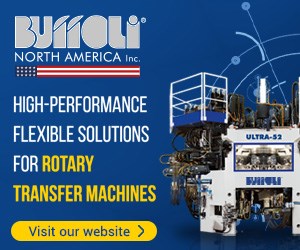LNS Bar Feeder Loads Small Bar Diameters
PMTS 2019: The GT 112-E automatic magazine bar feeder from LNS is especially useful for sliding headstock machines running unattended or lights-out production using small bar stock.
The GT 112-E automatic magazine bar feeder from LNS is especially useful for sliding headstock machines running unattended or lights-out production using small bar stock with diameters ranging 0.8-11 mm (12.7 mm with bar preparation). A dual diameter U-shaped guiding channel with a sectional cover combined with a self-centering bar clamping system matches the diameter range of the lathe. The single pitch screw magazine keeps small bars separated for consistent bar loading, according to the company.
Two models are available, one for 12'-2" long bars and another for 6'-6". Setup is said to take two minutes or less by inputting bar diameter, feed out length and guiding element diameter into the prompting, handheld, touch screen remote control. The bar feeder then automatically sets pushing torque, forward speed and feeding length.
Additional features include an electro-mechanical headstock synchronization of bar stock, the company’s safety joint pipe spindle reduction system that contains the bar and eliminates the need for spindle liners, a magazine tray holds as many as 30 bars with 7 mm diameter and under or as many as 15 bars over 7 mm, and an optional 400 mm Z-axis bar feeder retraction system that enables easy maintenance access.
Related Content
-
Chuck Jaws Achieve 77% Weight Reduction Through 3D Printing
Alpha Precision Group (APG) has developed an innovative workholding design for faster spindle speeds through sinter-based additive manufacturing.
-
Holding Aerospace Tolerances 24/7 in Central Wisconsin
Exceedingly challenging machining applications have a way of becoming achievable with the right team and equipment. Pointe Precision offers a case in point with its new automated fuel metering valve grinding and measurement cells.
-
Predicting the ROI of Robotic Automation
Various methodologies paired with online tools can help small to mid-sized manufacturers determine how to predict and calculate the potential economic benefits of robotic equipment for their specific needs.












